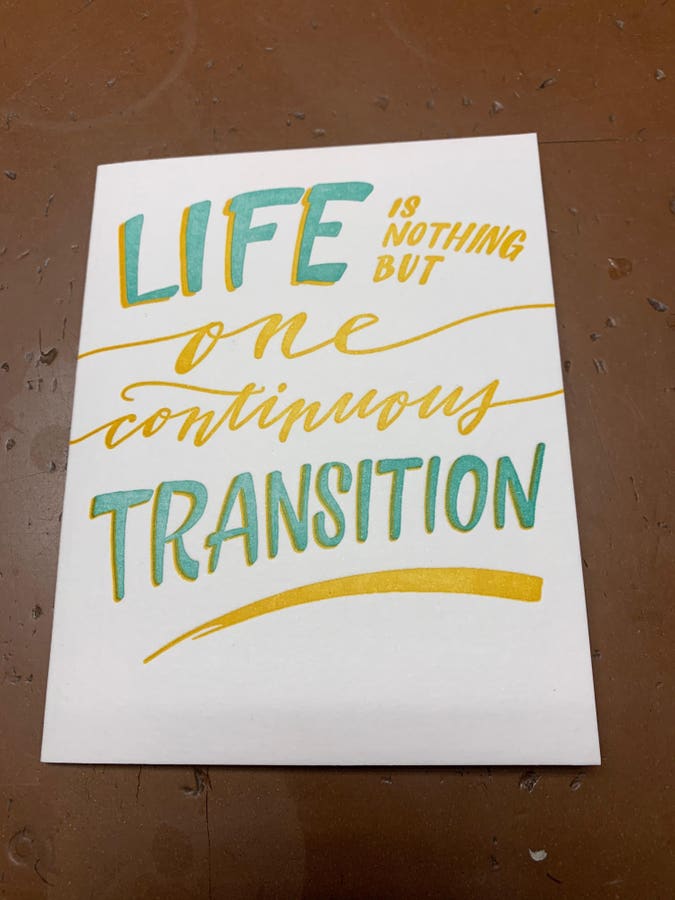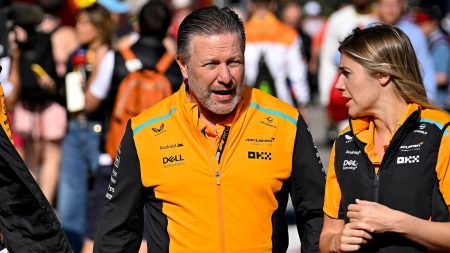Since I have been a Roger Federer fan for decades, I was eager to watch the new documentary Federer: Twelve Final Days. We get to watch Federer from the time he announces his retirement until he plays his final match at the Laver Cup. What we witness is how difficult it is for him to let go of his calling and identity for most of his life. Federer talks about his emotions at the end of his career and how he plans to still be associated with tennis in some way. He acknowledges how tennis has been so good to him.
The power in the documentary comes from how vulnerable and emotional Federer is willing to be in front of the camera, his team and friends, and his rivals. Unfortunately, many men in our society are discouraged from expressing their emotions. One particularly moving scene is at the end of the Laver Cup between him and his major competitor, Rafael Nadal. Both of them are emotional because Nadal realizes that part of his way of life is ending too. One person mentions how “athletes die twice”—once when they retire and again when they die.
This idea is echoed in The Weight of Gold, a 2020 documentary about the life challenges of Olympic athletes. While we think winning a gold medal is being on the top of the world, many athletes deal with mental health issues. What do you do next after you have won a gold medal or several gold medals? Narrated by Michael Phelps, the documentary focuses on life transitions and how difficult transitions are without support and resources.
The documentary emphasizes how athletes don’t know how to transition from training to be Olympic athletes to retiring and living and working as regular citizens. Several of the athletes said, “No one prepared me for life after being an Olympian.”
Though most of us are not Olympic athletes, we all can struggle with “the life after” we retire, and for many retirement feels like a death.
Understanding Life Transitions
Several years ago, I had the opportunity to interview William Bridges, one of the leading authorities on life transitions, and author of Transitions: Making Sense of Life’s Changes and The Way of Transition: Embracing Life’s Most Difficult Moments. Bridges developed a Transition Framework that is used by leaders in organizations and communities to help make deep change. I have been using Bridge’s work for many years in coaching people about life after retirement because it is a challenging transition. Bridges referred to these phases as inner reorientations because our inner life is recalibrating to the change taking place.
Contrary to what we typically think, we don’t resist change (external event). We resist the process of Transition (the inner and emotional aspects involved with change). We resist letting go of the way it was or we thought it was. We resist taking on a new identity or embracing the new situation. In the Bridges framework, Transition is made up of three stages:
1. Endings: which often result in sadness, anger, or remorse. We start with Endings because we don’t begin something without something ending. We can’t move ahead without leaving something else behind. Something is being lost and we need to learn to let go. We need to realize that people grieve for what was lost.
2. The Neutral Zone: which results in fear and confusion. It is not so much that we are afraid of change or so in love with the old ways, but we fear that place in between … The Neutral Zone is akin to being caught between trapezes—dangling above a great height. We are scared to let go of the trapeze when we don’t see another one within reach.
3. New Beginnings: a mix of confidence over what has been gained and anxiety about what has been lost and worrying about slipping back into old habits.
Interestingly, we don’t mind endings or new beginnings as much as we dread the Neutral Zone. That is why we go from one bad job to another, one bad relationship to another. We don’t take the time in the Neutral Zone to process, reflect, and learn about why it ended or why the change took place. Bruce Feiler, author of Life is in the Transitions: Mastering Change at Any Age, refers to the Neutral Zone as the Messy Middle because of the uncertainty and uncomfortableness.
Letting Go
Endings are tough and athletes retire much earlier than most of us. We can learn a lot from their struggles and how they make the transition. As in a physical death, there is grief and loss. In Twelve Final Days, Federer is extremely emotional while playing his final match. It’s as though his best friend has died. Even Nadal shows us his grief knowing he is losing his main competitor who pushed his skills to the limit.
Serena Williams found it difficult to focus on tennis after she had her first daughter. “As a super hands-on mom, I can’t tell you how hard it was. I lost so many matches after I had Olympia because it was so hard to be on the court. I feel like I’ve given so much of my life to tennis, my entire life, that it’s time to do something different for me and also work on other things.” When Serena Williams announced her retirement, she said she was “evolving away from tennis.” This is an excellent phrase because it indicates she is leaving something and moving onto something else while growing in the process.
While Roger Federer struggled to let go, he has moved on and reflected on what he learned from his tennis career. This spring, he delivered the commencement speech at Dartmouth and describes his transition away from tennis and the life lessons he has learned. Federer admits, “Even when I was just starting out, tennis could show me the world, but tennis could not be the world.”
As you look at your life, what is your tennis? What has defined you in the past that you must let go as you transition into retirement? What can you do to evolve? What will keep you going and how will you continue to grow? While leaving one’s main career is a death of one part of life, it allows room for something new to begin which can be exciting.
Read the full article here













